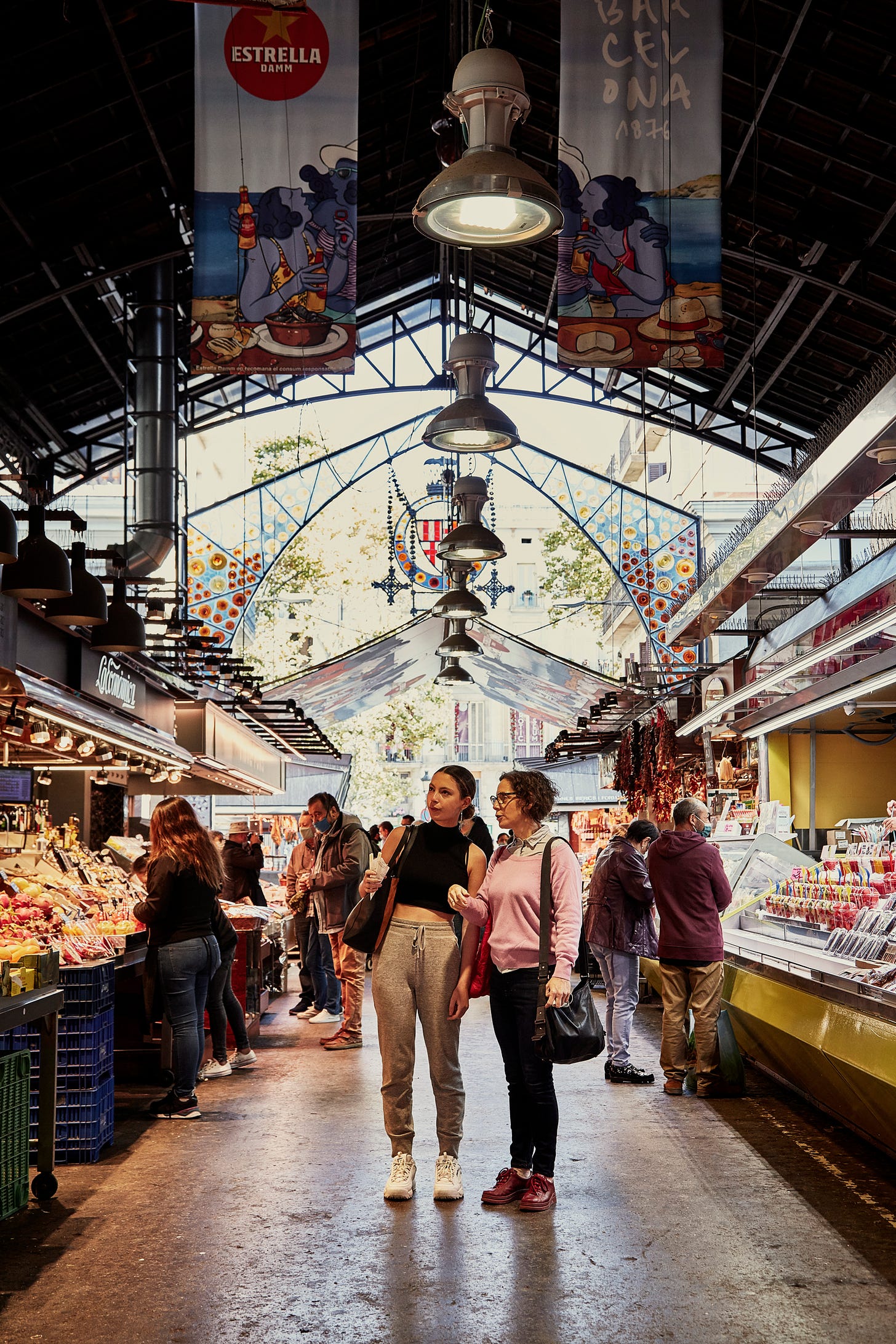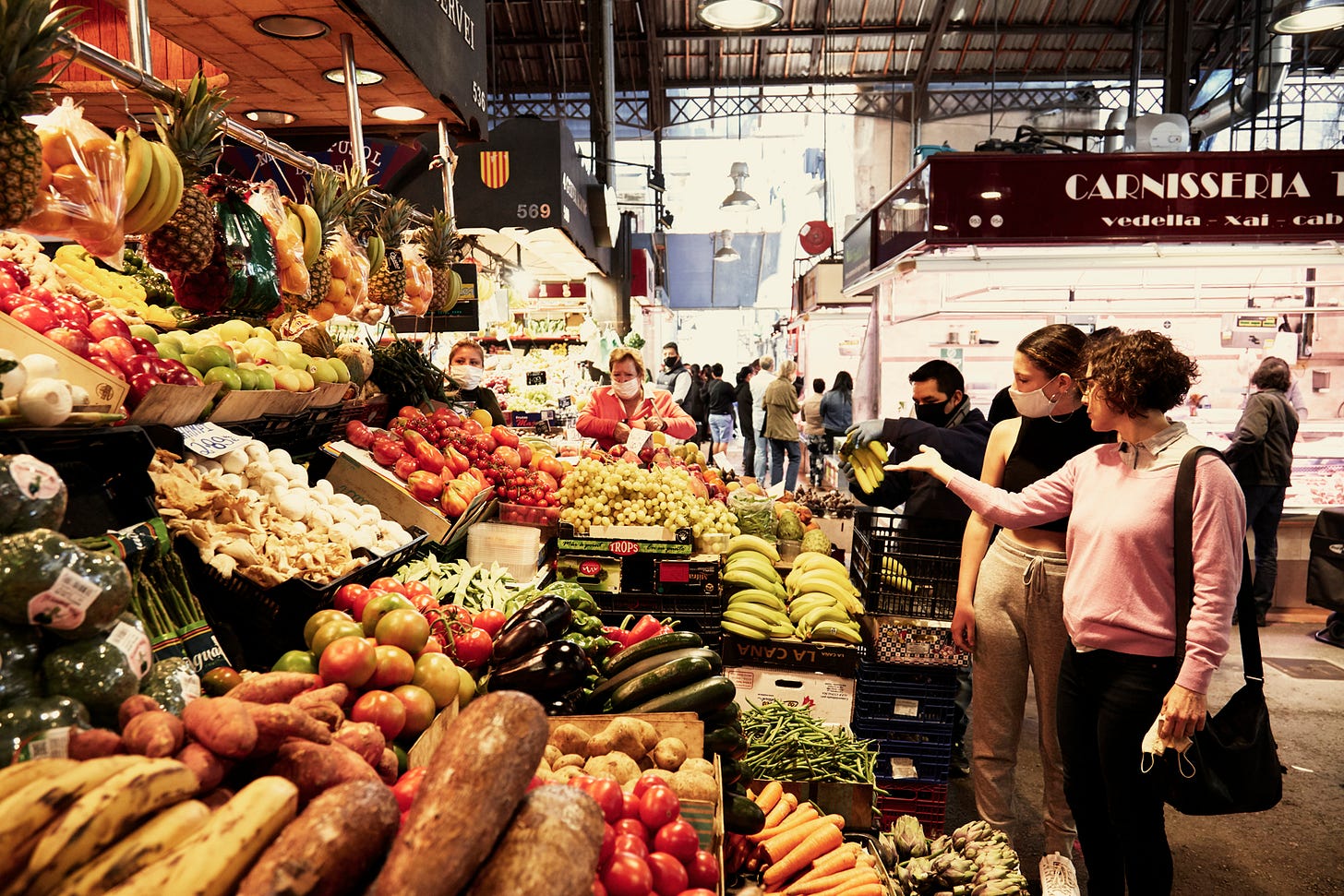For many, many years, up until not too long ago -I was optimistic- I believed, and told everyone, that the Boqueria market was still Barcelona’s number one site to visit. To me, it was as impressive as any of Gaudi’s landmark buildings. Its 300 stalls, most of them featuring the best fresh produce, fish and seafood around, made up a veritable city-within-the-city, an age-old community of food-focused fellow vendors. I relished every time I was fortunate enough to show a group of students or guests around La Boqueria, sharing with them its colorful delicacies and, with the history of the market, explaining the history of the city I live in. The most recent chapter in its history is also an important one in the history of the city, though perhaps not my favorite one.
Things started gradually changing, and, in recent years, not so gradually any more. I witnessed the transformation of the market: things changed radically in order to cater to the increasing hordes of tourists, most of them arriving on the cruise ships that have tainted the old city’s image. You see, cruise ship tourists barely see the city. Every day, thousands of people are unloaded from ships into the city center for a few hours; they don’t even want to eat too much, as most of their food is consumed on board. (Can you tell yet that I’m not a big fan of cruises?). With just a few hours to “get to know” the city, these short-term visitors stick to the tried and true route, and rarely if ever go astray: the Ramblas and the Sagrada Familia. Maybe, if the ship allows them more time, Parc Güell.
What did the market vendors and business along this cruise-ship-tourist route do? Find ways to give tourists what they want, of course: sangría, paella, easy, ready-made food that doesn’t take them too far out of their comfort zone (there’s no time for that!), just enough to say hey, I’ve seen Barcelona, I’ve seen Spain. Been there, done that.
A market that only sells foods that have to be cooked at home (i.e. a traditional local market) does not make much money from cruise ship tourists; they don’t cook while on land (neither do many tourists who come to the city for a brief stay). Thus some market vendors figured out ways to cater to the hordes of daily visitors from abroad: ready-to-eat items such as colorful juices or paper cones with bites of Spanish ham or Manchego cheese. The juices are the ones that irritate me most; my poor students, who loooove the juices because they are cheap and oh so colorful, are always embarrassed when I unwillingly single them out in class by taking it out on the juice vendors. My main issue with the juices is not just that they are replacing the traditional stalls, but that they are made with fruits that are not local, but come from far away places, and they are always watered down and with added sugar. They create the illusion of locality, while in fact offering a product that is sub-par, unsustainable, and quite a stretch from the healthy, pure image it gives off.
Sorry, I really don’t mean to make those of you who have ever enjoyed La Boqueria’s juices feel guilty, but I feel it’s important to reflect on where our food really does come from, and in this case the fact that the juice and ready to eat food stalls have displaced other traditional vendors, whose customers have shied away from their own market, because it just became way too uncomfortable to shop there.
The city has tried to make amends, by imposing regulations such as prohibiting crowds at peak-local shopping hours on Fridays and Saturdays. But so far it has not really worked. The crowds keep on coming. I’ve been there: I have visited the market many times, with a city permit, with my groups of students, and gotten dirty looks from vendors who know we are taking up space and not spending money.
It’s a conundrum, and not an easy one to solve, at that. How do you find creative solutions to a problem like this one? Tourism drives income; it’s Spain’s 1 industry, and we are still recovering from the strict regulations the government put in place during the pandemic, when so many places focused on tourism were put out of business -many of them indefinitely. Yet the massive amounts of tourists are scaring off the locals, and changing the configuration of the market (and the city).
Maybe we just have to accept that mass tourism is the sign of the times, and adapt accordingly. But we need to find some solutions to how to adapt without taking on all of the downsides mass tourism imposes on culture, climates, and societies. Any suggestions?
I for one, am now taking my students and guests to other city markets, nt the Boqueria. Barcelona still has plenty of local flavor to offer, even with the enormous loss of La Boqueria. Besides, people end up finding their way there no matter what, and are quite happy to peruse the cheap colorful juices at the stalls, without having to hear me preach against them.
If you’d like to find out which one of the 39 city-run markets is my favorite, book a tour with Sobremesa. In the meantime, here is a recipe from The Sobremesa Cookbook, which features some of my favorite fall foods, squash and walnuts. Alongside a good slice of my homemade GF sourdough bread, rubbed with tomato and drizzled with good extra virgin olive oil, this is dinner for me on many weeknights.
Keep reading with a 7-day free trial
Subscribe to Sobremesa's Table Talk to keep reading this post and get 7 days of free access to the full post archives.







